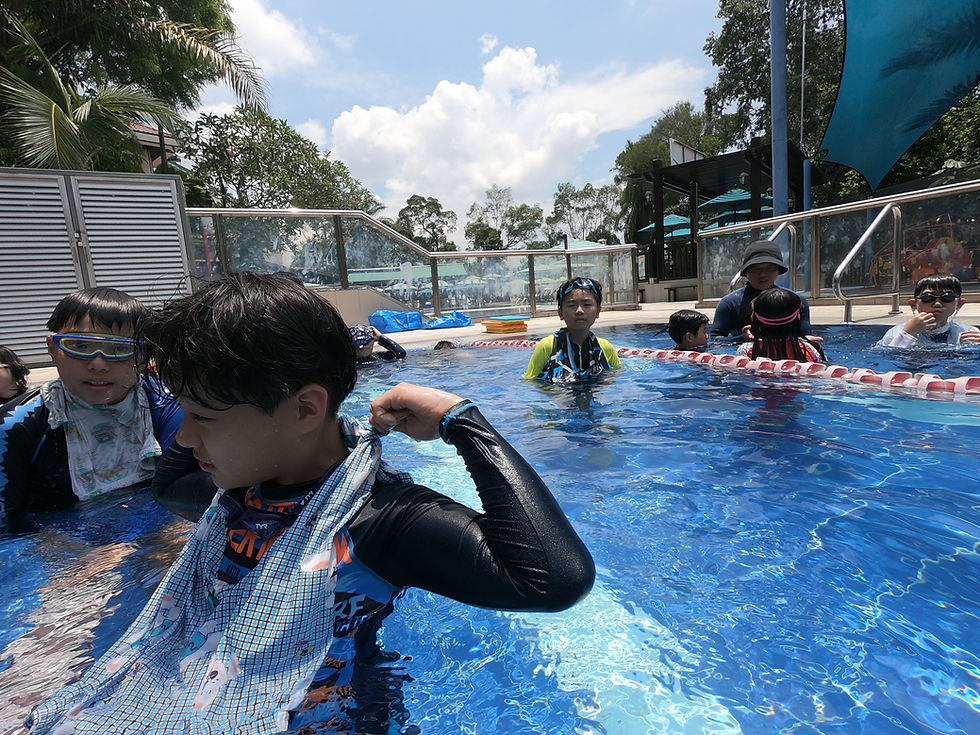Training for a Long-Distance Open Water Swim
- SG Sink Or Swim

- Aug 20, 2025
- 2 min read

Long-distance open water swimming is one of the most rewarding challenges a swimmer can take on. Unlike pool swimming, open water brings unique demands such as waves, currents, varying water temperatures, and mental endurance. Whether you’re preparing for a 5K, 10K, or even a marathon swim, having a structured training plan is key to success.
In this article, we’ll break down the essentials of training for a long-distance open water swim, covering endurance, technique, strength, and mental preparation.
🌊 1. Build a Solid Aerobic Base
Long-distance swimming requires an engine that can sustain effort for hours. Start by focusing on:
Steady-state swims: Long, continuous swims in the pool to simulate endurance.
Progressive overload: Gradually increase weekly mileage by 5–10% to avoid burnout.
Threshold sets: Include intervals at or near race pace to build stamina.
Example:
3 x 1500m at moderate pace with 1–2 minutes rest.
🏊 2. Practice in Open Water Early
Don’t wait until race day to experience outdoor conditions.
Train in lakes, rivers, or oceans to adapt to sighting, currents, and varying visibility.
Wear your race-day wetsuit or gear to get comfortable.
Practice starts, turns around buoys, and feeding strategies.
💪 3. Strength and Dryland Training
Building muscular endurance and power is critical for long-distance events. Focus on:
Core stability (planks, rotational exercises) for better body position.
Shoulder strength (resistance bands, pull-ups, pulley work) for efficient strokes.
Leg strength (squats, lunges, plyometrics) for strong kick support and starts.
🧭 4. Master Sighting and Navigation
Unlike the pool, there are no lane lines.
Practice lifting your head periodically during freestyle without disrupting your rhythm.
Use landmarks (buoys, trees, buildings) to stay on course.
Train sighting drills in both pool and open water.
🥶 5. Adapt to Cold and Conditions
Water temperature can impact performance significantly.
Gradually acclimate to colder water with short sessions.
Learn breathing control to stay calm in frigid conditions.
Practice in varying weather to build mental resilience.
🥤 6. Practice Nutrition and Hydration
For swims longer than 90 minutes, energy fueling is essential.
Experiment with energy gels, drinks, or small snacks during training.
Use a kayak or feeding station simulation in practice.
Never try new nutrition strategies on race day.
🧠 7. Mental Preparation
Long-distance open water is as much mental as physical.
Train with visualization and positive self-talk.
Break long swims into smaller mental checkpoints.
Practice staying calm in crowded starts and unexpected conditions.
✅ Sample Weekly Long-Distance Training Plan
Day 1: Long endurance swim (4000–6000m)
Day 2: Interval training (e.g., 10 x 400m at threshold pace)
Day 3: Strength & dryland workout
Day 4: Technique focus (drills, sighting, stroke efficiency)
Day 5: Open water practice (2000–4000m)
Day 6: Tempo or race-pace set
Day 7: Rest or active recovery
🌟 Final Thoughts
Training for a long-distance open water swim takes patience, consistency, and resilience. By combining endurance building, technique work, strength training, and mental strategies, you’ll be fully prepared to face the challenges of open water.
Every session brings you one step closer to the finish line — and the incredible sense of achievement that comes with it.





Comments